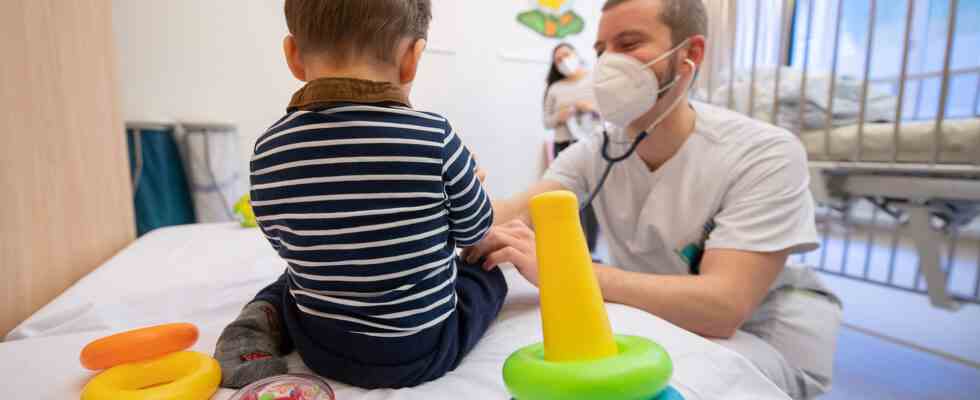Status: 01/12/2023 11:49 am
The Robert Koch Institute has been registering an “unusually steep increase” in streptococcal infections for several weeks. The bacteria can cause various diseases – including scarlet fever.
This winter, an accumulation of scarlet fever cases has already been reported from several countries, including Great Britain and the Netherlands. The childhood illness, which is caused by A streptococci, can sometimes have a severe course: In the United Kingdom, at least 19 minors have died as a result of the bacterial infection since September, according to figures from the UK Health Security Agency (UKHSA).
Infections with A streptococci are now also being increasingly registered in Germany: The Robert Koch Institute reports in its epidemiological bulletin an “unusually steep increase in invasive and non-invasive group A streptococcus detections from doctors’ offices and hospitals” for the last quarter of 2022. Still, the number of infections is loud RKI still below pre-pandemic levels. However, exact numbers are difficult to collect because the infections are not notifiable.
Various clinical pictures
Group A streptococci are bacteria found on our skin and mucous membranes. They are often harmless, but they can also cause various clinical pictures.
Especially in connection with the common cold viruses such as RSV and influenza, an increase in such clinical pictures is observed, says the pediatrician Reinhard Berner. He is director of the children’s clinic at the University Hospital Dresden and has been researching streptococci for years. However, nothing has changed in the ratio of harmless to pathological infections.
Mainly affected children
At the end of the 19th century, group A streptococci were also known to be associated with childbed fever, from which many mothers died after childbirth due to poor hygiene. Scarlet fever, a skin rash with fever, was also a common disease after the war, according to Berner, which often ended fatally without antibiotics.
Today, mostly parents are familiar with Group A streptococci because they cause sore throats in kindergarten and school children. According to Berner, the throat area of about every tenth child is colonized with group A streptococci. However, a sore throat is much rarer.
A disease can also occur in adulthood: “The classic age is school age, i.e. between six and 16 years. But young adults and old people can also get streptococcal infections.”
Sore throat without runny nose and cough
Depending on the clinical picture, the symptoms also differ. The typical strep throat includes severe sore throat and difficulty swallowing, swollen lymph nodes in the neck, and occasionally fever. In the throat of sick children, the tonsils are enlarged and red and may be covered with yellowish spots of pus. Unlike with a cold, group A streptococci do not cause a cold or cough, says Berner.
The clinical picture of scarlet fever occurs only rarely and is expressed by fever and a reddish rash. At the beginning, those affected usually have a headache, sore throat, difficulty swallowing or chills. The “raspberry tongue” is also typical of scarlet fever: At first the tongue is coated with white, after a few days it turns red with a raspberry colour. Possible complications include inflammation of the middle ear, sinuses, and lungs. In exceptional cases, a streptococcal infection can also lead to blood poisoning or toxic shock syndrome. According to Berner, this often ends fatally.
Doctor visit recommended
If the symptoms are severe, a visit to the doctor is recommended. However, antibiotics are not absolutely necessary, as many infections go away on their own. There are guidelines from medical societies for this.
Above all, the so-called rheumatic fever cannot be prevented with the administration of antibiotics. This is a rare complication of a streptococcal infection that is characterized by fever, severe joint pain and skin rash and can cause inflammation of the heart valves.
How long stay at home?
On the other hand, the current guidelines are less clear as to when a child can return to a community facility without treatment with antibiotics. Depending on the health department, up to 14 days are recommended. According to Berner, this makes no sense from an infectious disease point of view: “As a rule, children or even adults are no longer contagious if the symptoms have subsided for a certain number of days.” Efforts are being made to standardize this time to a maximum of two days, regardless of antibiotic administration.

